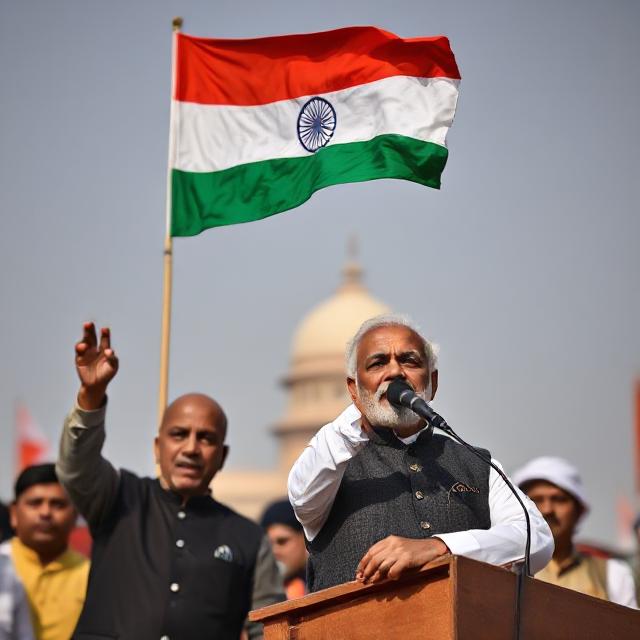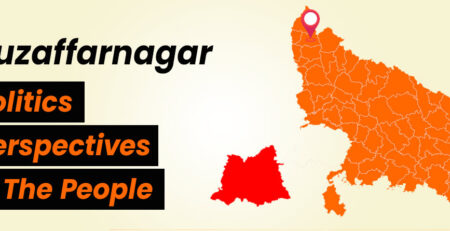Next Vice President of India 2025: JP Nadda, Rajnath Singh, and Other Front-runners After Jagdeep Dhankhar’s Resignation
Introduction
The sudden resignation of Jagdeep Dhankhar as India’s 14th Vice President has triggered intense political speculation across the nation. Jagdeep Dhankhar on Monday resigned as the Vice President of India with immediate effect, citing health concerns and the need to follow medical advice. This unexpected development has opened the race for one of India’s most prestigious constitutional positions, with several prominent leaders emerging as potential successors.
Jagdeep Dhankhar’s Resignation: Setting the Context
In an unexpected development, Jagdeep Dhankhar today resigned from his position as the Vice President of India, citing health reasons. The resignation marks an abrupt end to his tenure, which began on August 11, 2022, and was scheduled to continue until August 2027. His frequent run-ins with CM Mamata Banerjee always put the two in the headlines. Now, in his retirement – to prioritise heath care – he was admitted to AIIMS owing to chest pain in March this year.
The constitutional position of Vice President carries significant importance as the vice president of India is the second highest constitutional office in the government of India after the president. In accordance with Article 63 of the Constitution of India, the vice president discharges the functions of the president when a contingency arises due to the resignation, removal, death, impeachment or the inability of the president to discharge their functions.
Prime Contenders for Next Vice President of India
JP Nadda: The Frontrunner
Jagat Prakash Nadda emerges as one of the strongest candidates for the Vice Presidential position. Currently serving as the BJP National President and Union Minister of Health and Family Welfare, Nadda brings extensive political and administrative experience to the table. Jagat Prakash Nadda (born 2 December 1960) is an Indian lawyer and politician who is serving as the 34th Minister of Health, 25th Minister of Chemicals and Fertilizers since 2024 and 11th President of the Bharatiya Janata Party (BJP) since 2020.
JP Nadda’s credentials make him an attractive candidate for several reasons:
Political Experience: As BJP National President since 2020, Nadda has successfully navigated complex political landscapes and maintained party unity across diverse states. His leadership during crucial electoral battles has demonstrated his political acumen.
Administrative Competence: His tenure as Health Minister during the COVID-19 pandemic showcased his crisis management skills and administrative capabilities, essential qualities for the Vice Presidential role.
Pan-India Appeal: Nadda’s ability to work across regional boundaries and his acceptance among various BJP factions make him a consensus candidate.
Parliamentary Experience: His extensive experience in parliamentary procedures as a Rajya Sabha member aligns perfectly with the Vice President’s role as Chairman of the Rajya Sabha.
Rajnath Singh: The Veteran Choice
Defence Minister Rajnath Singh represents another strong contender for the Vice Presidential position. His decades-long political career and reputation as a consensus builder make him an attractive option for the ruling party.
Senior Leadership: Singh’s position as one of the senior-most leaders in the BJP hierarchy gives him natural precedence for high constitutional positions. His experience spans across various ministries and leadership roles.
Cross-Party Respect: Unlike many contemporary politicians, Rajnath Singh enjoys respect across party lines, a crucial factor for a Vice Presidential candidate who must maintain institutional dignity.
Uttar Pradesh Connection: Singh’s strong roots in Uttar Pradesh, India’s most populous state, could provide significant electoral advantages to the BJP in future political contests.
Parliamentary Expertise: His extensive experience in both Lok Sabha and Rajya Sabha, coupled with his understanding of parliamentary procedures, makes him well-suited for the Vice President’s role as Rajya Sabha Chairman.
Tamizhisai Soundararajan: Regional Representation
Former Telangana Governor and Tamil Nadu BJP leader Dr. Tamizhisai Soundararajan represents the party’s effort to strengthen its southern footprint. Her inclusion in the vice presidential race reflects the BJP’s strategic thinking about regional balance.
Medical Background: As a qualified doctor, Soundararajan brings professional expertise that could resonate well with various sections of society, particularly in healthcare-conscious times.
Southern Representation: Her candidature would signal the BJP’s commitment to southern states, where the party seeks to expand its influence beyond its traditional northern strongholds.
Women’s Representation: Her potential nomination would continue the trend of women in high constitutional offices, following President Droupadi Murmu’s election.
Administrative Experience: Her tenure as Puducherry Lieutenant Governor and later as Telangana Governor has provided her with valuable constitutional and administrative experience.
Regional Electoral Strategy Behind Vice Presidential Choice
The BJP’s approach to selecting the next Vice President appears driven by significant electoral considerations, particularly focusing on states where the party seeks to strengthen its position.
Bihar: Electoral Battleground 2025
Bihar emerges as a crucial consideration in the Vice Presidential selection process. The state’s upcoming 2025 Assembly elections make any candidate with Bihar connections potentially valuable for the BJP’s electoral prospects. A Vice Presidential candidate from Bihar could help the party consolidate its position against regional parties like RJD and JD(U).
Uttar Pradesh: Maintaining Dominance
Uttar Pradesh’s massive electoral significance cannot be understated in Indian politics. A candidate with strong UP connections could help the BJP maintain its dominance in the state while preparing for future electoral battles.
Tamil Nadu: Southern Strategy
The BJP’s persistent efforts to break into Tamil Nadu’s political landscape make a Tamil candidate for Vice President strategically important. This could help the party establish credibility in a state where it has historically struggled.
Kerala: Left Front Challenge
Kerala represents another challenging territory for the BJP, where a Vice Presidential candidate could help the party gain symbolic presence and potentially influence future electoral dynamics.
West Bengal: Mamata Banerjee Factor
Given Jagdeep Dhankhar’s contentious relationship with West Bengal Chief Minister Mamata Banerjee, the selection of his successor might consider the party’s strategy in this crucial eastern state.
Constitutional Process for Vice Presidential Election
Understanding the electoral process for Vice President provides insight into the political calculations behind candidate selection. The vice president is elected by an electoral college consisting of all members of both houses of the Parliament of India.
Electoral College Composition
The electoral college for Vice Presidential election includes:
- All elected members of Lok Sabha
- All elected members of Rajya Sabha
- All nominated members of both houses
NDA’s Electoral Advantage
The National Democratic Alliance’s comfortable majority in Parliament ensures that their nominee will likely win the Vice Presidential election. This mathematical advantage allows the BJP to focus on strategic considerations rather than purely electoral calculations.
Timeline and Process
The Election Commission of India will announce the election schedule once the government initiates the process. Typically, the entire process from notification to result declaration takes approximately one month.
Other Potential Candidates in Consideration
Harivansh Narayan Singh
The current Deputy Chairman of Rajya Sabha, Harivansh Narayan Singh, represents another potential candidate. His experience in parliamentary procedures and his journalistic background provide unique qualifications for the Vice Presidential role.
Manoj Sinha
Lieutenant Governor of Jammu and Kashmir, Manoj Sinha’s administrative experience in the sensitive region and his previous ministerial experience make him a viable candidate.
Nitin Gadkari
Union Minister for Road Transport and Highways, Nitin Gadkari’s reputation for effective governance and his acceptance across party lines make him a potential dark horse in the race.
Shashi Tharoor
Though from the opposition Congress party, Dr. Shashi Tharoor’s name has been mentioned in some circles, reflecting the tradition of considering candidates from across the political spectrum for constitutional positions.
Impact on BJP’s Organizational Structure
The elevation of JP Nadda to Vice President would necessitate significant organizational changes within the BJP. His term as BJP president is ending soon as the party is on lookout to find his replacement. This transition could reshape the party’s leadership dynamics and influence its electoral strategies.
Succession Planning
The BJP’s leadership succession planning becomes crucial if Nadda assumes the Vice Presidential role. The party needs to identify and groom his successor while ensuring continuity in organizational effectiveness.
Electoral Implications
The choice of Vice President could significantly impact the BJP’s electoral prospects in key states. Regional considerations, caste equations, and community representation all play roles in this high-stakes political decision.
Historical Context of Vice Presidential Selections
India’s Vice Presidential selections have traditionally balanced various factors including regional representation, political experience, and constitutional competence. Previous Vice Presidents have brought diverse backgrounds ranging from legal expertise to political leadership.
Precedents in Selection
The selection of Vice Presidents has often reflected the ruling party’s political priorities and strategic considerations. Regional balance, community representation, and political experience have all influenced these crucial decisions.
Role Evolution
The Vice Presidential role has evolved significantly over the decades, with incumbents bringing their unique strengths to both the constitutional position and their role as Rajya Sabha Chairman.
Challenges Facing the Next Vice President
Parliamentary Management
The next Vice President will inherit the crucial responsibility of managing Rajya Sabha proceedings during a politically charged environment. Effective parliamentary management requires diplomatic skills and constitutional expertise.
Inter-State Relations
Given India’s federal structure, the Vice President often plays an important role in managing center-state relations, particularly during constitutional crises or political disputes.
Institutional Dignity
Maintaining the dignity and neutrality of the constitutional office while managing competing political interests represents a significant challenge for any Vice President.
Economic and Policy Implications
Budget Sessions
The Vice President’s role as Rajya Sabha Chairman becomes particularly crucial during budget sessions and important policy discussions. Effective management of these sessions impacts legislative productivity.
Constitutional Amendments
Any future constitutional amendments will require effective management of parliamentary procedures, highlighting the importance of selecting a competent Vice President.
International Diplomatic Role
State Visits
The Vice President often undertakes diplomatic missions and represents India at international forums, making diplomatic experience and international credibility important selection criteria.
Multilateral Engagement
India’s growing international profile requires a Vice President capable of engaging effectively with global leaders and representing Indian interests abroad.
Technology and Modernization Agenda
Digital Parliament
The ongoing modernization of parliamentary procedures and the adoption of digital technologies require a Vice President who can adapt to technological changes while maintaining constitutional traditions.
Youth Engagement
Connecting with younger generations and modernizing institutional communication represents an important challenge for the next Vice President.
Conclusion: Strategic Implications of the Choice
The selection of India’s next Vice President represents far more than a constitutional appointment—it reflects the BJP’s broader political strategy, electoral calculations, and vision for institutional governance. Whether the choice falls on JP Nadda, Rajnath Singh, Tamizhisai Soundararajan, or another candidate, the decision will significantly impact India’s political landscape.
The regional electoral considerations spanning Bihar, Uttar Pradesh, Tamil Nadu, Kerala, and West Bengal demonstrate the interconnected nature of constitutional appointments and electoral politics in India. The successful candidate must balance constitutional duties with political realities while maintaining institutional dignity.
As India approaches crucial state elections and continues its journey toward becoming a developed nation by 2047, the Vice President’s role becomes increasingly significant. The choice made by the BJP leadership will reflect not just current political calculations but also long-term strategic thinking about India’s democratic future.
The resignation of Jagdeep Dhankhar has created an opportunity for the ruling party to recalibrate its approach to constitutional positions while strengthening its electoral prospects across diverse regions. The final decision will likely balance experience, regional representation, electoral strategy, and constitutional competence—making this one of the most watched political developments of 2025.
Note: The image is only AI generated










